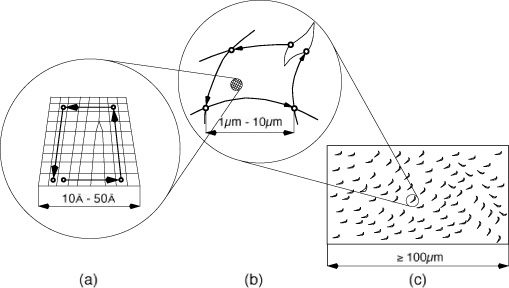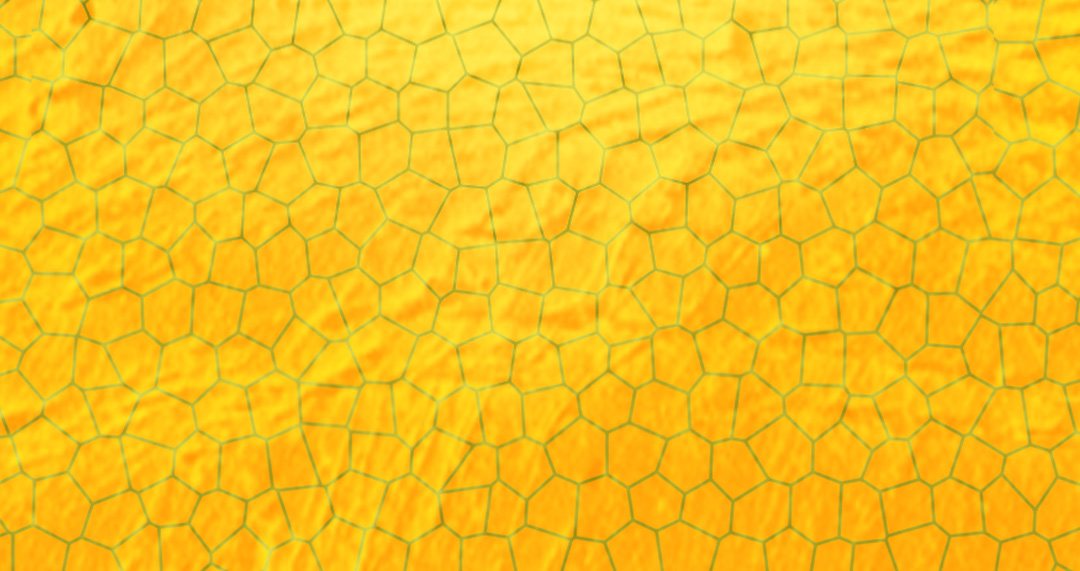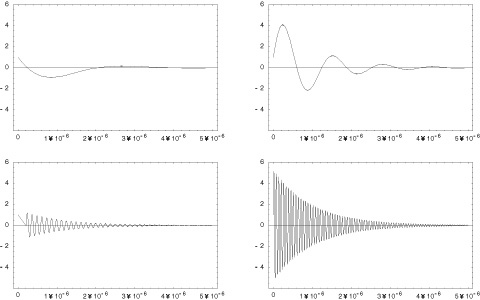Strain gradient continuum model
Description
Macroscopic failure of material is attributed mostly to the initial
presence of micro-cracks and micro-voids and is governed by physical
mechanisms at different length scales (*). In order to include
discontinuity mechanisms
in
the material deformation and its consequence on the energy dissipations
during micro-crack kinetics, strain gradient continuum model is
derived.
 Different length scales in material
Different length scales in material
Basically, theory of Noll's simple material allows to model
singularity by
introducing the affine
connection as an independent variable in addition to the metric tensor. In the same
way, the present work proposes continuum thermomechanics model capable
of capturing the distribution of
scalar and vector discontinuity within the continuum (previous draft of
"weakly
continuum theory").
Singularity distribution is related to
Volterra
dislocations (translational and rotational). The model connects the
macroscopic scale to the
mesoscopic discontinuities.

Grain texture observed in "continuum"
Singularity we consider is shown to be
entirely captured by the torsion
and curvature tensors of
the affine connection while the rate of evolution of singularity
induces a bulk irreversibility by increasing the production of internal
entropy. The present
approach contrasts to usual method in gradient continuum mechanics that
introduces internal variable and/or gradient of strain in the
constitutive laws.
 Attenuation of ultrasonic signal for
SG continuum with various "torsion" density.
Attenuation of ultrasonic signal for
SG continuum with various "torsion" density.
Application would be the modeling of
ultrasonic wave attenuation
for nondestructive material testing. Observation of evanescent waves in
a micro-cracked solids, at various
scale lengths, seems to be interesting in regards of controlling
and better understanding internal damping in engineering material as
ceramics or polymers, in earthquake propagation science and in
characterizing hard biological material as cortical bone tissue.
Moreover, theory of wave propagation accounting for mesoscopic
mechanisms could be efficient for better helping the monitoring of in
situ degradation of materials and the reliability of in situ
micro-devices.
Selected references
L. Rakotomanana. Some class of
strain gradient continuum models to
connect various length scales in plastic deformation, In Mechanics of Material Forces, Series :
Advances in Mechanics ans Mathematics, vol. 11, Steinmann P,
Maugin GA (Eds), Springer Verlag, 2005.
L. Rakotomanana. A geometric
approach to
thermomechanics of
dissipating continua, Birkhauser, Boston, in Progress in Mathematical Physics series,
31, 2004.
Rakotomanana L. Theoretical models of micro-cracked continua:
Discontinuity of scalar and vector fields, Technische Mechanik, 20, 2, 2000,
pp 159-168.
Rakotomanana L. Contribution à la modélisation
géométrique et thermodynamique d'une classe de milieux
faiblement continus, Archive
for Rational Mechanics and Analysis 141, 1998, pp 199-236.



